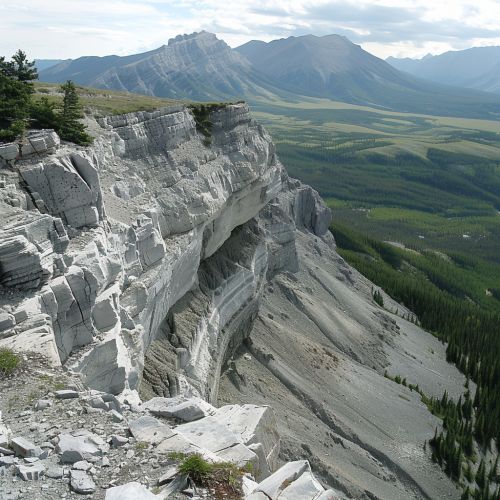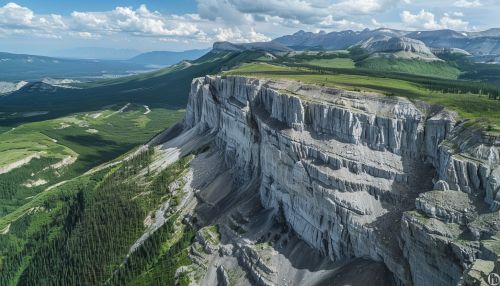Burgess Shale
Introduction
The Burgess Shale is a fossil-bearing deposit exposed in the Canadian Rockies of British Columbia, Canada. It is one of the most significant fossil locations in the world, providing an extraordinary record of the rapid diversification of life on Earth during the Cambrian explosion approximately 505 million years ago.


Geological Setting
The Burgess Shale is located within the Stephen Formation, a sequence of sedimentary rocks deposited in a deep-water setting at the edge of the North American continent. The Stephen Formation is part of the Cathedral Escarpment, a steep submarine cliff, where sediment periodically slumped down into the deep water, burying organisms and preserving them in exceptional detail.
Discovery and Exploration
The Burgess Shale was discovered in 1909 by paleontologist Charles Doolittle Walcott of the Smithsonian Institution. Walcott spent many summers at the site, collecting over 65,000 specimens. The site was largely forgotten until the 1960s when a team from the Geological Survey of Canada and the Royal Ontario Museum began a series of explorations.
Fauna
The Burgess Shale contains a diverse assemblage of fossils. The most common organisms are arthropods, but the site also contains fossils of sponges, brachiopods, echinoderms, and a variety of unusual, hard-to-classify organisms. Many of these organisms, such as the five-eyed Opabinia and the spiny Hallucigenia, are unique to the Burgess Shale and have no modern analogues.
Preservation and Taphonomy
The exceptional preservation of the Burgess Shale fossils is due to a combination of factors. The rapid burial of organisms in fine-grained sediment, the lack of oxygen at the seafloor, and the presence of clay minerals that impeded decay all contributed to the preservation of soft tissues and fine anatomical details.
Significance
The Burgess Shale provides a unique window into the Cambrian explosion, a critical period in the history of life on Earth when most major animal groups first appeared in the fossil record. The diversity and complexity of the Burgess Shale fauna challenge traditional views of the simplicity of early life and have significant implications for our understanding of evolutionary history.
